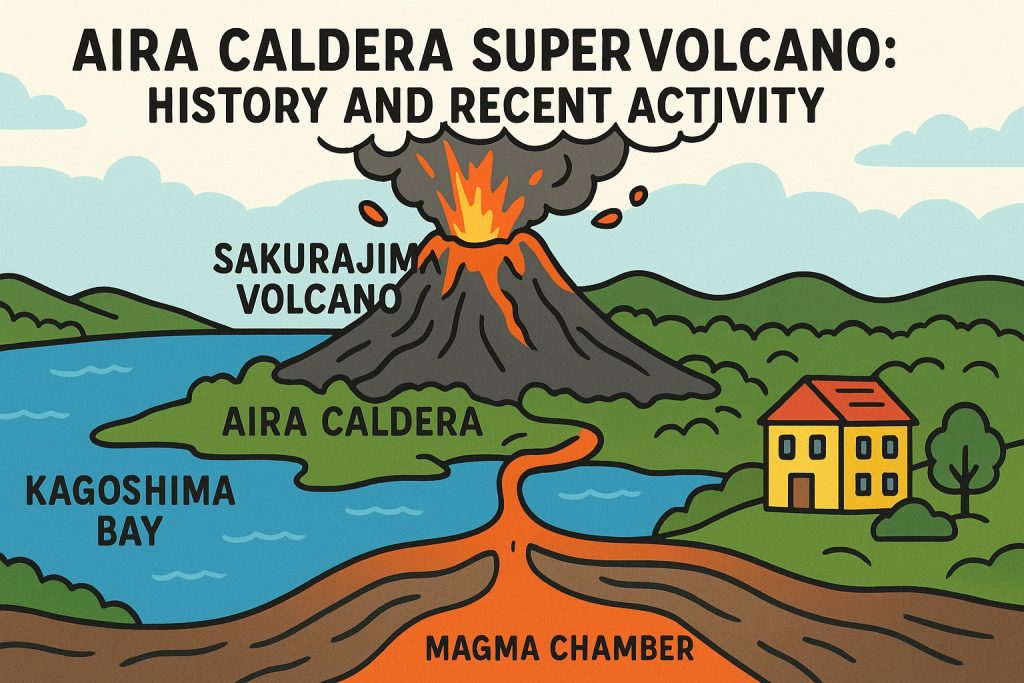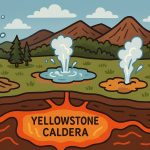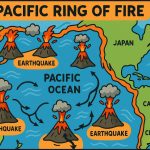Located in southern Kyushu, Japan, the Aira Caldera is one of the most active and geologically significant volcanic systems in the world. Unlike towering volcanoes, Aira is a caldera — a massive depression formed by the collapse of land following a super-eruption. It spans roughly 17 × 23 kilometers and lies beneath Kagoshima Bay. Though not as internationally famous as Yellowstone, Aira is closely monitored due to its frequent volcanic activity and dense nearby population.
The supervolcano includes multiple vents and features, the most prominent being Sakurajima Volcano, which sits within the caldera and is one of the most active volcanoes in Japan today.
The Ancient Super-Eruption
Aira’s supervolcanic origin dates back approximately 30,000 years, when a colossal eruption — known as the Aira-Tn eruption — ejected an estimated 400 km³ of volcanic material. This event reshaped the region, formed the caldera, and deposited ash as far as central Honshu.
The eruption caused the ground to collapse, forming the massive basin now partially flooded by Kagoshima Bay. Although it hasn’t had a super-eruption since, the system remains active and is constantly evolving beneath the surface.
Sakurajima: A Window Into the Caldera
While Aira itself hasn’t erupted on a supervolcanic scale in millennia, Sakurajima, its most visible feature, has been erupting frequently since 1955. Once an island, it is now connected to the mainland due to lava flows from past eruptions.
Sakurajima erupts hundreds of times each year, spewing ash, lava, and volcanic gases. It serves as a direct outlet for pressure and magma accumulation within the Aira system.
Recent Activity (Last 10–30 Years)
In the last few decades, Aira Caldera has exhibited notable signs of magmatic inflation — a process where magma slowly accumulates underground. Key developments include:
- Ground uplift in the city of Kagoshima, measured by GPS and satellite data.
- Increased seismic activity, especially during active eruptive phases of Sakurajima.
- Volcanic gas emissions, including sulfur dioxide, regularly monitored and often elevated.
- Emergency alerts, including Level 3 and Level 5 warnings, which have occasionally led to evacuation recommendations near Sakurajima.
In 2022 and 2023, several explosive eruptions occurred at Sakurajima, prompting brief evacuations and air travel disruptions. These eruptions are part of a broader pattern of pressure building beneath Aira, though there is no immediate sign of a catastrophic event.
Monitoring and Risk
Japan’s Japan Meteorological Agency (JMA) and international volcanologists closely monitor the Aira Caldera using:
- Seismic networks
- GPS deformation monitoring
- Gas and thermal sensors
- Satellite imagery
While a future super-eruption is considered unlikely in the near term, the potential impacts on millions of people underscore the need for continuous observation and preparedness.
Glossary
- Caldera – A large volcanic depression formed by the collapse of a volcano after a massive eruption.
- Supervolcano – A volcano capable of producing an eruption of over 1,000 km³ of material.
- Magmatic inflation – The underground buildup of magma that causes the surface to rise.
- Stratovolcano – A steep, conical volcano formed by layers of lava and ash.
- Sulfur dioxide – A volcanic gas used to monitor eruptive activity and magma movement.


